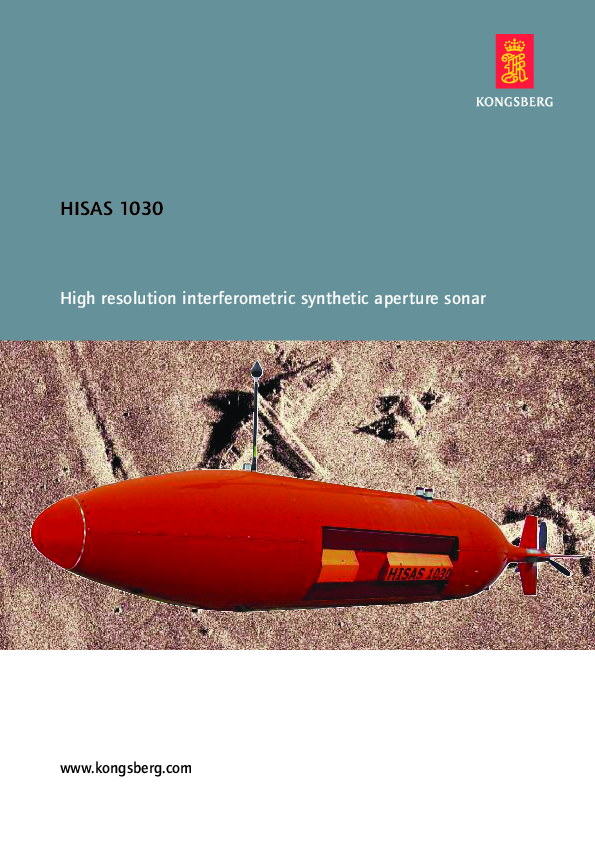

HISAS
Synthetic Aperture Sonar
Synthetic aperture sonar (SAS) is a form of sonar in which sophisticated post-processing of sonar data is used to produce a very narrow effective beam. It can only be used by moving instruments over relatively immobile targets, but it has seen wide applications in remote sensing and mapping.

Description
Synthetic aperture sonar (SAS) is a form of sonar in which sophisticated post-processing of sonar data is used to produce a very narrow effective beam. It can only be used by moving instruments over relatively immobile targets, but it has seen wide applications in remote sensing and mapping.
Much higher resolution
Synthetic aperture sonars combine a number of acoustic pings to form an image with much higher resolution than conventional sonars, typically 10 times higher. HISAS is a wideband SAS sonar with frequency range of 70-100kHz, capable of producing ultra high resolution acoustic images as well as co-registered bathymetry. The sonar is tightly integrated with the INS navigation and motion sensing platform of the HUGIN AUV, and makes use of modern signal processing such as DPCA (Displaced Phase Centre Analysis) to process the raw data into images.
4 cm resolution
The synthetic aperture sonar prototype has recently been tested with success at sea outside Horten, Norway, with signal processing done by Norwegian Defence Research Establishment (FFI). The image above is from this test and shows a sunken wreck standing upright on the bottom. It has a resolution of about 4 cm both along track and across, each acoustic beam being processed from 40 consecutive pings. If the reproduction of the image is good, one can observe details such as the wire running from the bow to the top of the mast.
Basic concepts
The azimuth (along-track) resolution of a sonar can be computed as the ratio between the acoustic wavelength and the length of the array. For typical side scan sonars, this ratio is of the order 1:60-1:400. The Synthetic Aperture Sonar principle overcomes these limitations by utilising data from several consecutive pings to synthesize a longer sonar array. The maximum range is proportional to the receive array length, and inversely proportional to the platform speed. The theoretical azimuth resolution in SAS is half the length of each element in the receive array, at all ranges.
Do you have questions about this product?
- Questions about price, availability, and/or retailers
- Questions about technical specifications and usage
- Questions about suitability for your project or application
Documents








